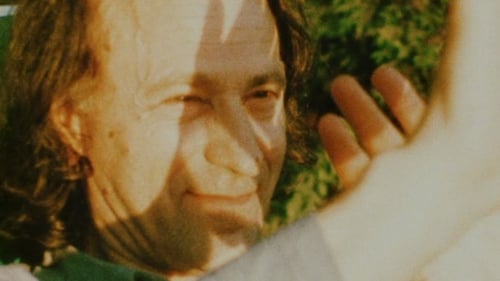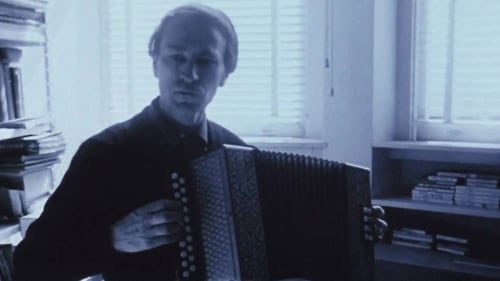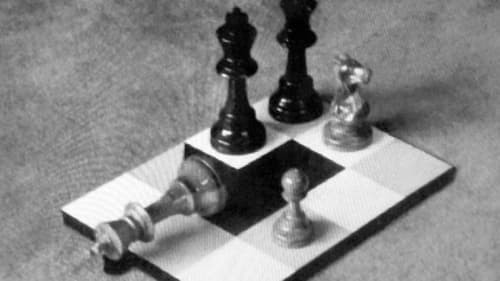
Hans Richter
출생 : 1888-04-06, Berlin, Germany
사망 : 1976-02-01
약력
Richter's first contacts with modern art were in 1912 through the "Blaue Reiter" and in 1913 through the "Erster Deutscher Herbstsalon" gallery "Der Strum", in Berlin. In 1914 he was influenced by cubism. He contributed to the periodical Die Aktion in Berlin. His first exhibition was in Munich in 1916, and Die Aktion published as a special edition about him. In the same year he was wounded and discharged from the army and went to Zürich and joined the Dada movement.
Richter believed that the artist's duty was to be actively political, opposing war and supporting the revolution. His first abstract works were made in 1917. In 1918, he befriended Viking Eggeling, and the two experimented together with film. Richter was co-founder, in 1919, of the Association of Revolutionary Artists at Zürich. In the same year he created his first Prélude (an orchestration of a theme developed in eleven drawings). In 1920 he was a member of the November group in Berlin and contributed to the Dutch periodical De Stijl.
Throughout his career, he claimed that his 1921 film, Rhythmus 21, was the first abstract film ever created. This claim is not true: he was preceded by the Italian Futurist Bruno Corra and Arnaldo Ginna between 1911 and 1912 (as they report in the Futurist Manifesto of Cinema), as well as by fellow German artist Walter Ruttmann who produced Lichtspiel Opus 1 in 1920. Nevertheless, Richter's film Rhythmus 21 is considered an important early abstract film.
Richter moved from Switzerland to the United States in 1940 and became an American citizen. He taught in the Institute of Film Techniques at the City College of New York. While living in New York City, Richter directed two feature films, Dreams That Money Can Buy (1947) and 8 x 8: A Chess Sonata in 8 Movements (1957) in collaboration with Max Ernst, Jean Cocteau, Paul Bowles, Fernand Léger, Alexander Calder, Marcel Duchamp, and others, which was partially filmed on the lawn of his summer house in Southbury, Connecticut.
In 1957, he finished a film entitled Dadascope with original poems and prose spoken by their creators. After 1958, Richter spent parts of the year in Ascona and Connecticut and returned to painting. In 1963, he directed the short film "From the Circus to the Moon" on the American artist Alexander Calder.
Richter died in Minusio, Switzerland in 1976.

Himself (archive footage)
Experimental filmmaker Pip Chodorov traces the course of experimental film in America, taking the very personal point of view of someone who grew up as part of the experimental film community.

himself
This piece had its world premiere as the opening film of the Hans Richter Tribute at Cinema Arsenal in the summer of 2003. The nine minutes of film are a compilation of all appearances of Hans Richter in Jonas’s films. The result is a new work, a singular contemporary document, which does not only capture Hans Richter, but shows him embedded in his environment.

Self
A film collage tracing the story of the lives, loves, and deaths within the artistic community surrounding Jonas Mekas.

Dedicated to Nigel Gosling. Voice-over with Hans Richter reading a Dada text. Filmed in Locarno.
Oesterreichisches Filmmuseum, Vienna

Self
“1950년부터 영상 일기를 찍었어요. 언제나 볼렉스 카메라를 들고 다니며, 내가 만나게 되는 상황이나 친구, 뉴욕의 모습, 계절의 변화 등 즉각적인 현실에 반응하고자 했죠. 어떤 날에는 열 프레임, 어떤 날에는 10초, 또 어떤 날에는 10분 정도 촬영을 했습니다. 물론, 아무것도 찍지 않은 날도 있었어요. 일기를 쓸 때는 ‘회상’이라는 절차가 수반되는데, 보통 책상에 앉아서 그날 하루를 되돌아보며 일기를 써 내려가기 때문이죠. 한편 영상(카메라) 일기의 경우, 어떤 순간에 대한 즉각적인 반응을 포착할 수 있습니다. 특정 대상을 카메라에 제대로 담던 담지 못하는 것과 관계없이, 순간의 반응 자체를 카메라가 기록합니다. 어떤 상황에 다시 돌아가 촬영을 재개한다면, 그것은 재연된 영상이 되어버리죠. 이는 사건이나 감정이 수반될 수밖에 없습니다. 일어나는 일을 있는 그대로 포착하려면, 내가 사용하고 있는 도구(여기에서의 도구는 볼렉스 카메라를 말한다)에 대한 온전한 이해가 필수적입니다. 내가 반응을 보이는 현실뿐만 아니라 내가 반응함과 동시에 내 감정의 상태(와 모든 기억)까지 포착할 수 있어야 하기 때문이죠. 다시 말해, 카메라를 들고 촬영이 이루어지는 바로 그 장소에서 영상의 구조화(편집) 작업까지 끝낼 수 있어야 합니다. 월든에서 여러분이 만나는 모든 영상은 카메라에 담겨있는 영상과 동일합니다. 1964년부터 1968년까지 촬영한 영상을 순차적으로 연결한 것입니다. 사운드트랙의 경우, 목소리, 지하철 소리, 길거리 소음 등 촬영 당시 수집한 사운드에 쇼팽의 음악-난 로맨틱한 사람입니다-과 때때로 의미 있고 또 때때로 의미 없는 사운드를 섞어 제작하였습니다.”

Himself
This documentary concerns the contributions of German artists to the Dadaist movement. Created in 1916, the organizers rejected previous convention and delighted in nihilistic satire in painting, sculpture and literature. Comparisons are made between the movement and the political and social upheaval at the time of the release of this feature (1969).

Director
American sculptor, Alexander Calder, creates around the workshop. The film features several of his kinetic sculptures-- Wild moving figurines that spin, undulate and perform circus acts. The film ends on a hanging moon mobile, completing our wacky trip.

Poem
Free-associative images are juxtaposed with disorienting poetry in Richter's late work. The film is visual dynamite: Upside-down and reversed footage, play with shadows and light, billiards and dice and balloons-- suggestive and surreal images. Tenets of Dada writing, such as games of chance, punnery, wordplay and loud nonsense noise are foist upon the viewer as Dada poems are read / performed by their orignal authors.

Editor
Free-associative images are juxtaposed with disorienting poetry in Richter's late work. The film is visual dynamite: Upside-down and reversed footage, play with shadows and light, billiards and dice and balloons-- suggestive and surreal images. Tenets of Dada writing, such as games of chance, punnery, wordplay and loud nonsense noise are foist upon the viewer as Dada poems are read / performed by their orignal authors.

Director
Free-associative images are juxtaposed with disorienting poetry in Richter's late work. The film is visual dynamite: Upside-down and reversed footage, play with shadows and light, billiards and dice and balloons-- suggestive and surreal images. Tenets of Dada writing, such as games of chance, punnery, wordplay and loud nonsense noise are foist upon the viewer as Dada poems are read / performed by their orignal authors.

Writer
8 x 8: A Chess-Sonata in 8 Movements is an American experimental film directed by Hans Richter, Marcel Duchamp, and Jean Cocteau. Described by Richter as "part Freud, part Lewis Carroll" and filmed partially on the lawn of Duchamp's summer house in Southbury, Connecticut.

Director
8 x 8: A Chess-Sonata in 8 Movements is an American experimental film directed by Hans Richter, Marcel Duchamp, and Jean Cocteau. Described by Richter as "part Freud, part Lewis Carroll" and filmed partially on the lawn of Duchamp's summer house in Southbury, Connecticut.

Director

Dialogue
An attempt to bring the work of surrealist artists to a wider public. The plot is that of an average Joe who can conjure up dreams that will improve his customer's lives. This frame story serves as a link between several avant-garde sequences created by leading visual artists of their day, most of whom were emigres to the US during WWII.

Producer
An attempt to bring the work of surrealist artists to a wider public. The plot is that of an average Joe who can conjure up dreams that will improve his customer's lives. This frame story serves as a link between several avant-garde sequences created by leading visual artists of their day, most of whom were emigres to the US during WWII.

Story
An attempt to bring the work of surrealist artists to a wider public. The plot is that of an average Joe who can conjure up dreams that will improve his customer's lives. This frame story serves as a link between several avant-garde sequences created by leading visual artists of their day, most of whom were emigres to the US during WWII.

Writer
An attempt to bring the work of surrealist artists to a wider public. The plot is that of an average Joe who can conjure up dreams that will improve his customer's lives. This frame story serves as a link between several avant-garde sequences created by leading visual artists of their day, most of whom were emigres to the US during WWII.

Director
An attempt to bring the work of surrealist artists to a wider public. The plot is that of an average Joe who can conjure up dreams that will improve his customer's lives. This frame story serves as a link between several avant-garde sequences created by leading visual artists of their day, most of whom were emigres to the US during WWII.

Director
Made for the Zurich National Exhibition in 1939, Die Börse als Barometer der Wirtschaftslage charts the increase of stock exchanges in the history of economic development.

Novel

Writer

Novel

Writer
Directed by Hans Richter.

Director
Directed by Hans Richter.

Director
Die neue Wohnung, Version Atelier Richter, was made a year after the SWB version, for screenings in Germany that began in January 1932. This version, of similar length, is a complete re-edit, in which there is no mention of SWB, but there are new intertitles.

Director
Commissioned by Philips, Europa Radio celebrates the company’s experimental PCJJ shortwave radio station in Eindhoven that went on air in 1927 and broadcasted to Europe as well as the rest of the world in various languages. Hans Richter’s film covers one day from morning to night, showing the range and scope of the daily radio programs – from stock market news and sports events to live concerts and a speech by Albert Einstein. (via: impakt.nl)

Writer
A commissioned film for Schweizerischer Werkbund (SWB), Die neue Wohnung was produced for the Basel architectural and interior design exhibition, WOBA, to demonstrate innovative aspects of modern architecture and highlight their differences from the event’s highly conservative approach. Despite its ad campaign roots, Richter's touch is not absent; The surviving version, aimed at a "bourgeois" Swiss public, presents decluttered, functional architecture and decor as superior to the traditional and luxurious "ancient" ways of living.

Director
A commissioned film for Schweizerischer Werkbund (SWB), Die neue Wohnung was produced for the Basel architectural and interior design exhibition, WOBA, to demonstrate innovative aspects of modern architecture and highlight their differences from the event’s highly conservative approach. Despite its ad campaign roots, Richter's touch is not absent; The surviving version, aimed at a "bourgeois" Swiss public, presents decluttered, functional architecture and decor as superior to the traditional and luxurious "ancient" ways of living.

Writer
Two Penny Magic (Zweigroschenzauber) starting off with a little magic trick. It then presents an array of images from swimmers, bicyclers, murderers, airplanes in flight, boxers, lovers, runners, becoming in the end a collection of images in a magazine.

Director
Two Penny Magic (Zweigroschenzauber) starting off with a little magic trick. It then presents an array of images from swimmers, bicyclers, murderers, airplanes in flight, boxers, lovers, runners, becoming in the end a collection of images in a magazine.

Editor
A day at the carnival — sensational tent shows where miracles can be seen for the price of admission, boisterous noise of crowds and barkers, shrill and gaudy circus music, the violence of the street ten-fold. This is the substance of Everything Turns, Richter’s first sound film. At its premier at Baden-Baden Richter got into a fight with two Nazi officials who disliked the film's ‘modernism.’ Yet in 1936 it was awarded first prize for artistic merit by the Nazis, with Richter’s name suppressed from the credits. He had long since left Germany.

Writer
A day at the carnival — sensational tent shows where miracles can be seen for the price of admission, boisterous noise of crowds and barkers, shrill and gaudy circus music, the violence of the street ten-fold. This is the substance of Everything Turns, Richter’s first sound film. At its premier at Baden-Baden Richter got into a fight with two Nazi officials who disliked the film's ‘modernism.’ Yet in 1936 it was awarded first prize for artistic merit by the Nazis, with Richter’s name suppressed from the credits. He had long since left Germany.

Director
A day at the carnival — sensational tent shows where miracles can be seen for the price of admission, boisterous noise of crowds and barkers, shrill and gaudy circus music, the violence of the street ten-fold. This is the substance of Everything Turns, Richter’s first sound film. At its premier at Baden-Baden Richter got into a fight with two Nazi officials who disliked the film's ‘modernism.’ Yet in 1936 it was awarded first prize for artistic merit by the Nazis, with Richter’s name suppressed from the credits. He had long since left Germany.

Sound
Experimental documentary focusing on a day in the life of city workers, featuring montage sequences and repetition to emphasise the monotony of routine office work.

Writer
Experimental documentary focusing on a day in the life of city workers, featuring montage sequences and repetition to emphasise the monotony of routine office work.

Director
Experimental documentary focusing on a day in the life of city workers, featuring montage sequences and repetition to emphasise the monotony of routine office work.

General Tilly
A farcical war between the forces of Commercial Cinema and Independent Cinema.

Editor
In Race Symphony (1928), Richter documents and celebrates a typical day at the German races, where a sophisticated people turn up in droves to gape, gasp, place a bet, and celebrate a well-deserved win.

Producer
In Race Symphony (1928), Richter documents and celebrates a typical day at the German races, where a sophisticated people turn up in droves to gape, gasp, place a bet, and celebrate a well-deserved win.

Writer
In Race Symphony (1928), Richter documents and celebrates a typical day at the German races, where a sophisticated people turn up in droves to gape, gasp, place a bet, and celebrate a well-deserved win.

Director
In Race Symphony (1928), Richter documents and celebrates a typical day at the German races, where a sophisticated people turn up in droves to gape, gasp, place a bet, and celebrate a well-deserved win.

Editor
Hans Richter, noted for his abstract shorts, has everyday objects rebelling against their daily routine.

Producer
Hans Richter, noted for his abstract shorts, has everyday objects rebelling against their daily routine.

Writer
Hans Richter, noted for his abstract shorts, has everyday objects rebelling against their daily routine.

Hans Richter, noted for his abstract shorts, has everyday objects rebelling against their daily routine.

Director
Hans Richter, noted for his abstract shorts, has everyday objects rebelling against their daily routine.

Art Direction
Inflation (1928) is an experimental silent film at eight minutes which is sometimes categorized as a documentary. By now Richter is well beyond playing with light & shadow. Inflation explores the subject of money through photographs & with with stop motion animation techniques, adding faces of people impoverished & enriched by the unpredictability of finance. It functions almost as a political cartoon in motion, building to a chaotic & catastrophic climax.

Producer
Inflation (1928) is an experimental silent film at eight minutes which is sometimes categorized as a documentary. By now Richter is well beyond playing with light & shadow. Inflation explores the subject of money through photographs & with with stop motion animation techniques, adding faces of people impoverished & enriched by the unpredictability of finance. It functions almost as a political cartoon in motion, building to a chaotic & catastrophic climax.

Editor
Inflation (1928) is an experimental silent film at eight minutes which is sometimes categorized as a documentary. By now Richter is well beyond playing with light & shadow. Inflation explores the subject of money through photographs & with with stop motion animation techniques, adding faces of people impoverished & enriched by the unpredictability of finance. It functions almost as a political cartoon in motion, building to a chaotic & catastrophic climax.

Writer
Inflation (1928) is an experimental silent film at eight minutes which is sometimes categorized as a documentary. By now Richter is well beyond playing with light & shadow. Inflation explores the subject of money through photographs & with with stop motion animation techniques, adding faces of people impoverished & enriched by the unpredictability of finance. It functions almost as a political cartoon in motion, building to a chaotic & catastrophic climax.

Director
Inflation (1928) is an experimental silent film at eight minutes which is sometimes categorized as a documentary. By now Richter is well beyond playing with light & shadow. Inflation explores the subject of money through photographs & with with stop motion animation techniques, adding faces of people impoverished & enriched by the unpredictability of finance. It functions almost as a political cartoon in motion, building to a chaotic & catastrophic climax.

Writer
Entertaining Dadaist experimental short, similar to Man Ray's work, full of shifting geometric shapes, stock footage of seagulls, flying eyeballs, and glaring floating heads.

Director
Entertaining Dadaist experimental short, similar to Man Ray's work, full of shifting geometric shapes, stock footage of seagulls, flying eyeballs, and glaring floating heads.

Director
We watch white shapes dancing on black background, which changes when the white shape fills up the screen completely, and black lines and figures bounce around on the now white background.

Director
Abstract animated short film. Grey and white squares change size and shape on a black background.





